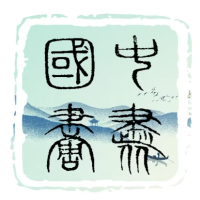白云乡者,河北馆陶人也,生于丙申(1956年),卒业于壬戌河北师范美术,留校任教,今为美术研究所所长,教授硕士生,享国务院特殊津贴。
Bai Yunxiang, a native of Guantao, Hebei, was born in the year of Bing Shen (1956). He graduated from Hebei Normal University's Art Department in the year of Ren Xu, stayed on to teach, and is now the director of the Art Research Institute, a professor, and a master's tutor. He enjoys a special allowance from the State Council.

白云乡
白君之山水画,脱古出新,妙于实验,离陈出新,粗笔焦墨,横拖直拽,浅褐浅绿,水墨渲染,浑厚自然,胸中磅礴丘壑尽现。采众家之长,成一己之体,风格独具。其笔力遒劲,墨色节制,线条巧配,淡雅之彩点缀其中,笔墨辉映。白君好满构图,画面饱满,以精力描山石之体面,展其裂痕缝隙,诉山石之沧桑,书民族之遭遇。山石坚实,山气流动,白云飘荡,树木挺立,偶有居人,此皆生气充盈之景,乃民族生生不息之所栖也。如是山水,画中之丘壑,千古胸臆之写照;笔墨之间,古今精华之传承。白云乡者,诚艺坛奇才也。
白云乡者,栖于太行之麓,所绘多写此山。其画风厚重沉郁,平实雄浑。业界谓其画,深受五代关仝、北宋范宽之风。荆浩,水墨画理之开山,白君亦受其理论之陶。白云乡于大学肄业时,研荆浩《笔法记》,其中“求真说”与“六要论”,简述山水“形”“质”“神”“气”之奥理。初学之际,白君专注笔墨,先求物象之形质,后究神气之妙出。师李明久,风华正茂,示范古法,融入新意,白云乡由是得悟“笔墨当随时代”之旨,遂立志终身履行水墨山水之道。
白云乡于卒业之年,笔墨已臻大成,遂敢参展全国,所作《铜墙铁壁》《太行壮歌》皆入选并获殊荣,因而自信益增。每岁携门生写生太行,云乡于斯山之识益深,然对己作之状愈不满。尝试诸技,终日长吁,思何以画语达胸中淤积之情。思虑再三,复从荆浩之理汲其精髓,遂于笔墨之间,创一新境。
Bai's landscape paintings are innovative and experimental, breaking away from traditional patterns. He uses coarse brushes and scorched ink, dragging horizontally and vertically, blending light brown and green with ink washes to create a thick, natural look, revealing the grandeur of his inner landscape. He draws on the strengths of various schools to create his own unique style. His brushwork is vigorous, ink colors are restrained, lines are skillfully matched, and light colors embellish the work, making the ink shine. Bai favors full compositions, filling the canvas with energy, depicting the body and surface of the mountains, revealing their cracks and fissures, narrating their ancient history, and recording the fate of the nation. Solid mountains, flowing mountain air, drifting clouds, and standing trees, occasionally with dwellings, present a lively scene, the habitat of a thriving nation. Such landscapes, with their depicted hills and valleys, reflect the eternal heart of humanity; the brush and ink carry the essence of ancient and modern wisdom. Bai Yunxiang is truly a remarkable talent in the art world.
Bai Yunxiang resides at the foot of the Taihang Mountains, often painting this very range. His style is heavy, somber, simple, and majestic. The art community believes his work is greatly influenced by Guan Tong of the Five Dynasties and Fan Kuan of the Northern Song. Jing Hao, a pioneer of ink painting theory, also significantly impacted Bai's work. During his university years, Bai studied Jing Hao's "Notes on Brushwork," which outlines the principles of "truth-seeking" and the "six essentials," explaining the essence of shape, quality, spirit, and energy in landscapes. In his early studies, Bai focused on mastering brush and ink, first grasping the shape and quality of objects, then exploring the subtleties of spirit and energy. His teacher, Li Mingjiu, a young and talented artist, demonstrated traditional techniques infused with modern ideas. Through this, Bai realized the principle of "brush and ink should follow the times," dedicating himself to the lifelong pursuit of ink landscapes.
Upon graduation, Bai Yunxiang had already mastered brush and ink techniques and boldly participated in national exhibitions. His works "Copper Walls and Iron Walls" and "The Heroic Song of Taihang" were selected and awarded, greatly boosting his confidence. Annually, he led students to sketch in the Taihang Mountains, deepening his understanding of the range but growing increasingly dissatisfied with his creations. He experimented with various techniques, often sighing, pondering how to express the accumulated feelings within his heart through painting. After much contemplation, he drew inspiration from Jing Hao's theories, making significant breakthroughs in his brush and ink techniques.

















白云乡好满幅构图,笔墨之妙,勾、皴、擦、染、点并施。用笔或中锋,或侧锋,或拖,或逆,色破墨,墨破色,色墨交融,笔墨合一。惜墨如金,几无虚耗,墨多则多用,墨少则少施,落笔无败。一笔之下,山石之形体、虚实、线条、笔触,墨色之干湿浓淡,皆在协调对比之中。构图罕有预设,唯物象熟稔于心,落笔如山崩,随机而发,笔笔生辉。
秋季太行,动白云乡心。山岩嵯峨,林染猩黄,水寒山瘦,秋风飒然。云乡以新视观大山,顶峰黑岩直上,指天为界;长坡衰草披披,风动如织。旷野之风,掠草梢而过,或如万马奔腾,或如细丝抽缕。云乡感岁月回响,历史长音,若洪波激荡于心。秋日长坡,较之峭拔高山,少险峻,多厚实,空灵而恬静。其景摄人心魄,内蕴张力,令人神往。
白云乡妙创笔墨,独具一格,意减线之成分,破勾皴之界,侧锋积墨,重叠反复,直至苍茫深郁。其致力团块之感,体积之势,务求山石之肌理与面貌毕现。白君之笔墨,虽含现代之意,然传统渊源深厚。其艺践行,诠释石涛“笔墨当随时代”之旨,成繁简中之统一,跌宕中之均衡,起伏中之浑然,变化中之大和。此和谐,乃东方文化之精髓也。
Bai Yunxiang prefers full compositions, skillfully integrating outlining, texture strokes, rubbing, washing, and dotting. He uses the brush in various ways—center, side, dragging, and reverse—creating harmony between color and ink, with each enhancing the other. He is economical with ink, rarely washing his brush, making the most of the ink on it, avoiding wasted strokes. Each stroke captures the structure, form, light and shadow, lines, and brushwork of the mountains, with the ink's dryness and wetness, density, and lightness all perfectly balanced. He rarely plans compositions beforehand, relying on his deep understanding of the subjects to guide his spontaneous and powerful brushwork.
The autumnal Taihang Mountains moved Bai Yunxiang deeply. The rugged rocks, the crimson and yellow forests, the cold waters, and the lean mountains, with the autumn wind rustling, provided a fresh perspective. The black rocks at the mountain tops pointed to the sky, and the long slopes were covered with withered grass. The wild wind swept over the grass tips, sometimes like a thousand galloping horses, sometimes as fine as drawn silk. Bai felt the echoes of history and the timeless resonance, like mighty waves stirring his heart. Compared to the steep peaks, the autumn slopes, though less dramatic, were more substantial, serene, and peaceful, conveying a profound stillness and inner strength.
Bai Yunxiang innovatively developed a unique brush and ink language, consciously reducing the use of lines, breaking the boundaries of outlines and texture strokes, using side brushes and layered ink to achieve a deep, rich effect. He focused on the sense of mass and volume, faithfully representing the surface texture and form of the mountains. While his brush and ink language has a modern sensibility, it is deeply rooted in tradition. His artistic practice gives a contemporary interpretation to Shi Tao's principle that "brush and ink should follow the times," achieving unity in complexity, balance in movement, and harmony in variation. This harmony embodies the essence of Eastern culture.
责任编辑:苗君
